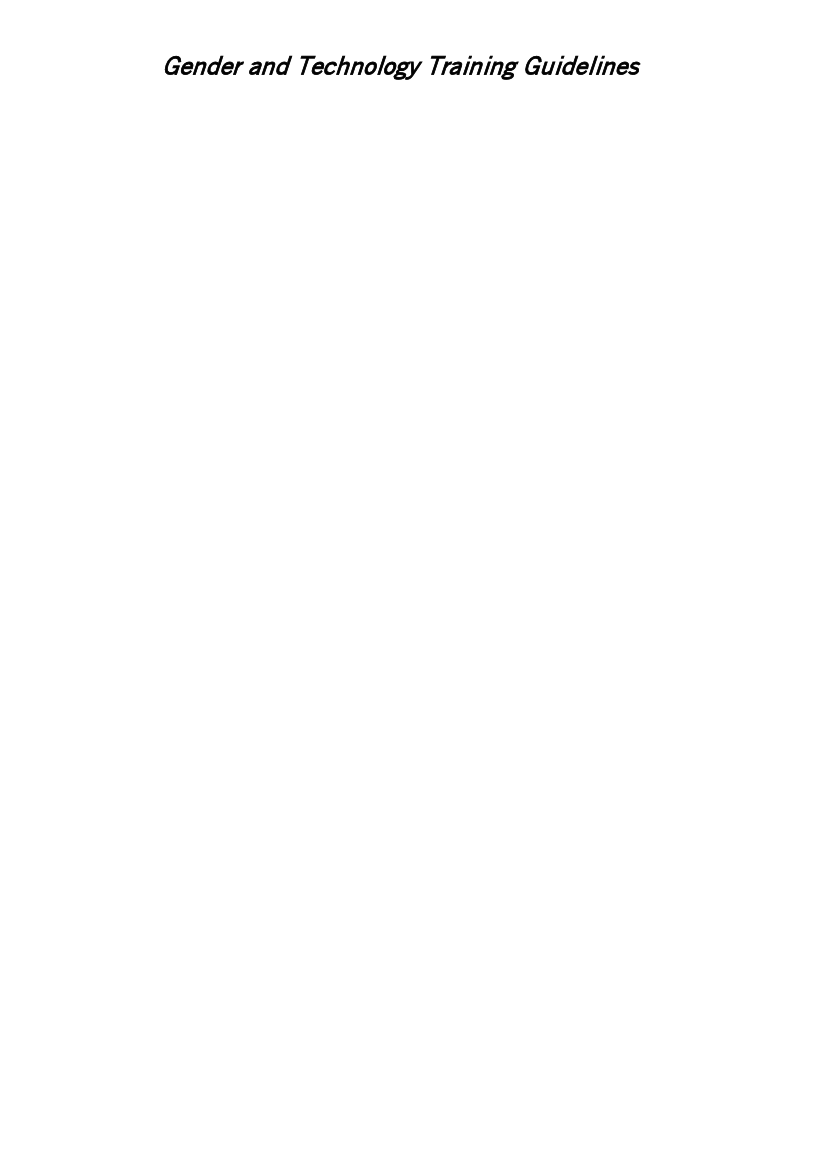
Gender and Technology Training Guidelines
Session 11 - Handout 1
SCENARIO THREE
In the settlement areas of the major irrigation schemes, the availability of water
enables the settlers to cultivate their fields three times a year. The settlers have
been allocated three acres of paddy land and two acres of highland. Most of the
settlers have arrived in the area from the more densely populated parts of the
country. They have settled as nuclear families with few or no kinship ties with their
neighbours. They carry out their farming activities independent of each other.
It is intended that families should be helped to grow cash crops on irrigated plots.
The extension services may also be able to widen the range of advice offered.
Traditionally, women are responsible for cultivation of home gardens which provide a
significant contribution to the household diet. These gardens are usually rain-fed.
Women also have the responsibility for household tasks such as food preparation,
water and fuel wood collection, and child care. There is a scarcity of fuel wood in the
area.
56